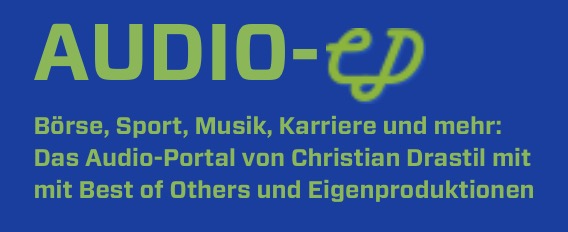19.02.2018, 4028 Zeichen
- Euro Area sustains the pace of its economic expansion: 0.6 % (q/q) GDP growth in Q4 2017.
- In 2017 the Austrian economy expanded by 3.1 % (y/y) surpassing Euro Area economic growth by 0.6 %-points.
The Euro Area’s economic expansion continues to follow a supportive trend. Last week’s Eurostat flash estimate of Gross Domestic Product (GDP) for Q4 2017 has confirmed the preliminary estimate of 0.6 % seasonally adjusted quarter-on-quarter (swda, q/q) growth. Compared to the fourth quarter of 2016, the Euro Area’s economy expanded by 2.7 % (swda, y/y) which translates into an annual growth rate of 2.5 % (swda, y/y) for the whole year of 2017.
Among the bigger Euro Area economies, the growth momentum during the fourth quarter of 2017 was broadly in line with the Euro Area average. The economic expansion continues to be broad based. Germany and France expanded by 0.6 % while the Spanish economy grew slightly above average at 0.7 % (swda, q/q). Only Italy continues to underperform with 0.3 % (swda, q/q) in Q4 2017.
In Austria, the economic expansion is in full swing and outperforms the Euro Area with growth at 0.7 % (swda, q/q). Economic growth continues to be supported by household consumption (1.4 %, y/y). Despite of continued strong export growth (7.3 %, y/y) the positive external effect has reduced significantly due to accelerated import growth (7.4 %, y/y). Investment growth remains robust being supported by a build-up of inventories with gross capital formation growth at 9.3 % (y/y) – Figure 1. While the Euro Area grew at 2.5 % in 2017, the Austrian economy expanded by 3.1 % (swda, y/y) compared to 2016.
CEE: the region shows continued growth momentum.
- Hungary surprised to the upside with year-on-year growth at 4.8 % (seasonally adj.) in Q4 2017.
- Romania was the fastest growing economy in 2017 with GDP growth at 6.9 % (y/y).
Besides the economies of the Euro Area, also the economies of Central and Eastern Europe (CEE) released flash estimates of GDP during the fourth quarter of 2017. Overall, the Q4 GDP estimates reflect the favorable economic conditions in the CEE region – Figure 2. Probably the biggest surprise was Hungary, where GDP expanded by 1.3 % (swda, q/q) compared to Q3 2017 and 4.8 % (swda, y/y) compared to Q4 2016. Romania, on the other hand, experienced a deceleration of economic growth with 0.6 % (q/q) GDP growth after a very strong third quarter at 2.4 % (q/q). Hence, Romania still has the highest year-on-year growth rate in the whole region at 7 % (Q4 17). The GDP growth figures of the Czech Republic (5.1 %, y/y), Poland (4.3 %), Slovakia (3.6 %) and Bulgaria (3.6 %) were all in-line with the growth acceleration during the previous quarters.
In Serbia, which reported 2.5 % (y/y, nsa) GDP growth during Q4, growth picked up from quarter to quarter starting at 1.1 % (y/y) in Q1 2017. For the total of last year, Serbia’s economy expanded by 1.8 %. In contrast to that year-on-year growth slowed down in Ukraine, reporting 1.8 % (nsa, y/y) growth in Q4 2017.
In 2017 economic growth was favorable, indeed. However, looking at long-term, or potential, growth also shows that the cyclical upswing in 2017 was not enough to push potential growth to levels seen before the financial crises – Figure 3. Even though, potential growth has accelerated recently none of the countries are projected to connect to the previous highs in growth potential. The IMF’s advice at the World Economic Forum in Davos to use the current favorable economic conditions to tackle existing structural weaknesses and, through this mechanism push potential growth, was, therefore, well placed. The latest Transition Report 2017-18 by the European Bank for Reconstruction and Development has identified similar challenges for the CEE region, arguing that economic growth based on technological transfer has come to an end. The region needs to implement a growth model based on innovative capability to escape the middle-income trap. Policy-makers would, therefore, be wrong to rest on current GDP data.

Wiener Börse Party #648: AT&S neue Chancen, but why Friday? 4x High: Addiko Bank, Do&Co, ATX TR, Rosgix
Bildnachweis
1.
Austria: Contributions to GDP growth
2.
CEE: Quarterly GDP growth in 2017
3.
Potential GDP Growth
Random Partner
Verbund
Verbund ist Österreichs führendes Stromunternehmen und einer der größten Stromerzeuger aus Wasserkraft in Europa. Mit Tochterunternehmen und Partnern ist Verbund von der Stromerzeugung über den Transport bis zum internationalen Handel und Vertrieb aktiv. Seit 1988 ist Verbund an der Börse.
>> Besuchen Sie 68 weitere Partner auf boerse-social.com/partner




Latest Blogs
» Wiener Börse Party #648: AT&S neue Chancen, but why Friday? 4x High: Add...
» Wiener Börse zu Mittag fester: Addiko Bank, FACC und AT&S gesucht, DAX-B...
» Börsenradio Live-Blick 13/5: DAX unchanged, Bayer Charterfolg, Siemens E...
» Börse-Inputs auf Spotify zu u.a. Ursula Ressl, MSCI World, Airbnb, Shopi...
» ATX-Trends: AT&S, DO&CO, Post, Wienerberger ...
» Börse-Inputs auf Spotify zu Petra Plank, Glorreiche Sieben
» Börsepeople im Podcast S12/18: Ursula Ressl
» Karrieren & Kurse: Petra Plank, Mentorin für Beziehungsfähigkeit (und da...
» Österreich-Depots: Wochenend-Bilanz (Depot Kommentar)
» Börsegeschichte 10.5.: Hans Haider, Erste Group, RBI, Lenzing (Börse Ges...
-
11:59
-
11:58
-
11:57
-
08.05.
-
11:57
-
11:32
-
11:21
-
11:21
-
11:05
-
10:53
-
10:53
-
10:49
-
10:49
-
10:46
-
10:46
-
10:36
-
10:35
-
10:35
-
10:35
-
10:29
-
10:13
-
10:13
-
10:04
-
10:04
-
10:00
-
09:55
-
09:52
-
09:42
-
09:38
-
09:36
-
09:34
-
09:06
-
09:05
-
09:02
-
09:02
-
09:01
-
09:01
-
09:00
-
09:00
-
09:00
-
09:00
-
09:00
-
09:00
-
09:00
-
09:00
-
08:47
-
08:46
-
08:42
-
08:30
-
08:24
-
08:16





